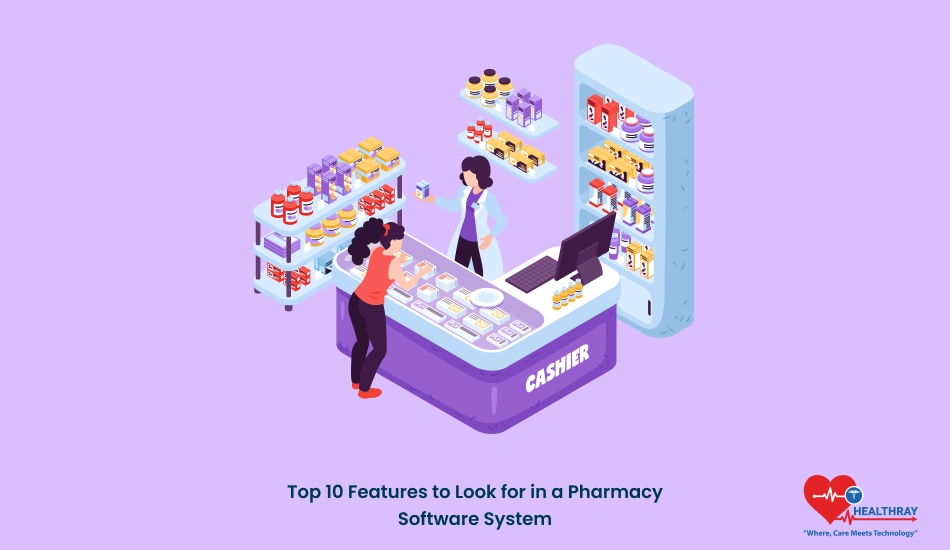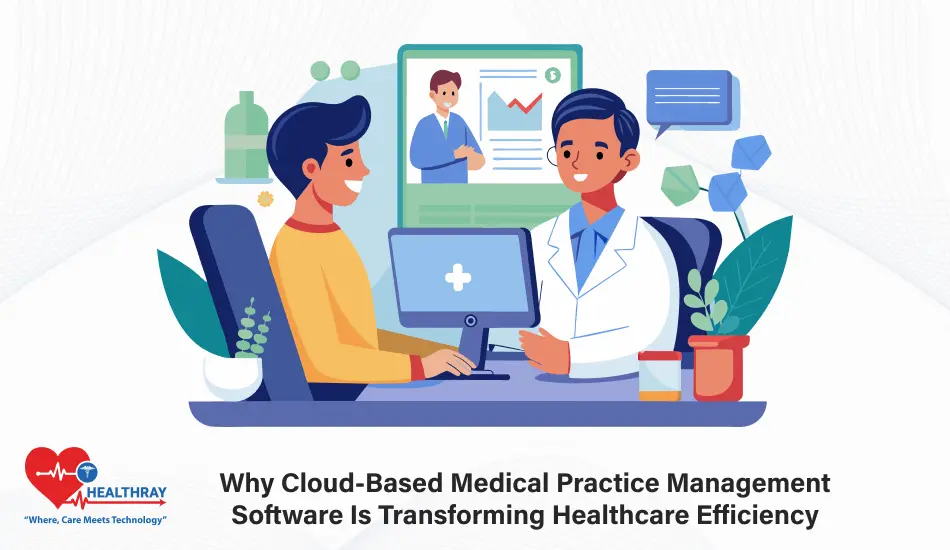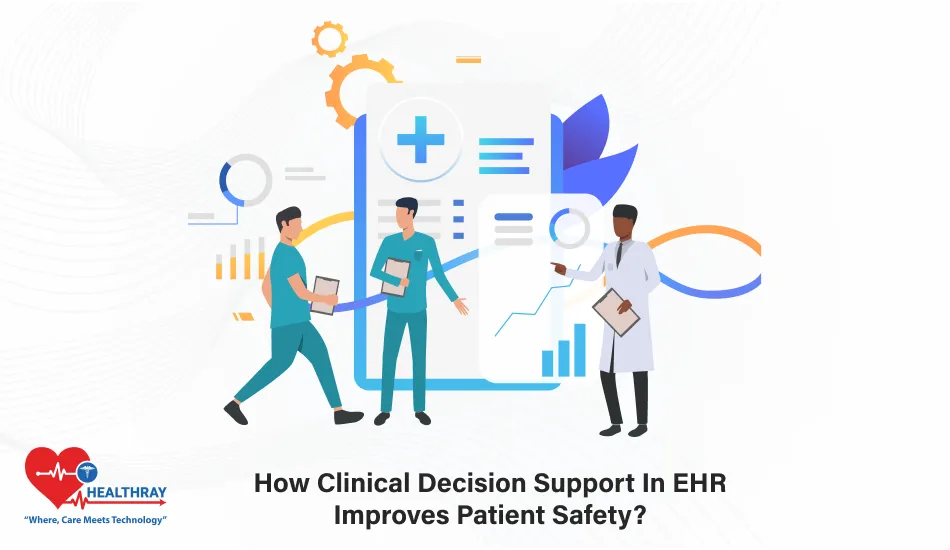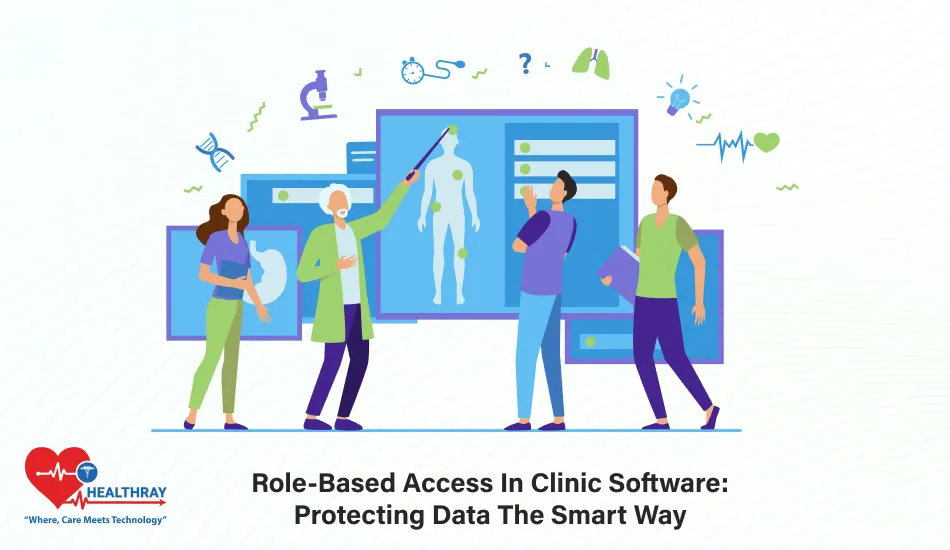Choosing the right pharmacy software system can feel like navigating a maze of technical jargon and endless options. Whether you run an independent pharmacy, manage a chain, or oversee a hospital pharmacy, your choice of software will directly impact your efficiency, compliance, and patient care.
This guide breaks down the top 10 features to look for in a Pharmacy Management System. We’ll explore how these features can transform your operations, making them smoother, faster, and more secure. Stick around to learn how to pinpoint the system that fits your pharmacy’s needs perfectly, whether it’s customizing workflows for a local pharmacy or integrating hospital systems.
Essential Features to Look for in a Pharmacy Software System
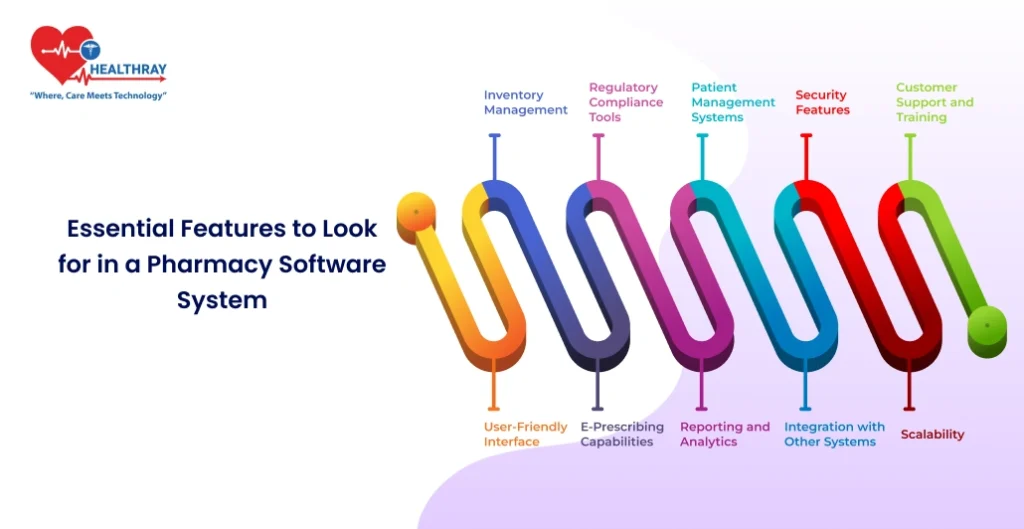
With these functions, you can effortlessly compare patient engagement features in pharmacy management software and some of the functionalities are similar.
User-Friendly Interface
An intuitive design is a must-have for any pharmacy software. A complicated interface can slow down workflows and increase errors. Look for a system that your team can learn quickly and operate efficiently without hours of training. Simple navigation and clean dashboards can save valuable time during busy hours.
Inventory Management
Keeping track of your stock is critical. A good pharmacy software system should offer real-time inventory updates, automated alerts for low stock levels, and insights into fast-moving or slow-moving medications. These tools help you avoid overstocking or running out of essential medicines, keeping your pharmacy financially and operationally balanced.
E-Prescribing Capabilities
Manual prescription processes are outdated and prone to errors. With e-prescribing, you can streamline how prescriptions are received and managed. Features like auto-verification, medication history checks, and refill management make the entire process faster and safer for both pharmacists and patients.
Regulatory Compliance Tools
Pharmacies are under constant scrutiny to meet local and national regulations. Your software must include tools to ensure compliance, such as automatic reporting, controlled substance tracking, and integration with regulatory databases. These features can help avoid costly penalties and audits.
Reporting and Analytics
Modern pharmacy management system software thrives on data. Reporting and analytics tools help you track sales trends, predict inventory needs, and even identify patient adherence issues. Look for software that generates easy-to-read reports and offers customizable metrics to align with your pharmacy’s goals.
Patient Management Systems
Caring for patients goes beyond just filling prescriptions. Patient management features like medication reminders, allergy alerts, and refill synchronization improve medication adherence and customer satisfaction. These tools can make your pharmacy a trusted partner in your community.
Integration with Other Systems
Many pharmacies use multiple software platforms for various tasks. A top-tier pharmacy system should integrate seamlessly with other tools like point-of-sale systems, insurance platforms, and hospital EMRs (for hospital pharmacies). This ensures all your systems communicate smoothly, reducing redundancies and errors.
Security Features
Protecting sensitive patient and pharmacy data is non-negotiable. Look for software with robust security protocols, such as encryption, two-factor authentication, and regular updates to defend against cyber threats. This safeguards not only your patients but also your business reputation.
Scalability
Pharmacies grow, and so do their needs. Whether you plan to expand your independent pharmacy or add locations to your chain, your software should scale with you. Cloud-based systems often provide the flexibility to add users, locations, and features without significant downtime or extra costs.
Customer Support and Training
Even the best software can encounter glitches. Reliable customer support and comprehensive training resources ensure that your team can troubleshoot problems quickly and stay confident in using the system. Look for providers that offer 24/7 support and detailed guides or training sessions.
Tailoring Features to Different Pharmacy Types
Independent Pharmacies
Independent pharmacies often face unique challenges, including budget constraints and the need for flexibility. The right software should be customizable and affordable without sacrificing key features. Look for:
- Cost-Effectiveness: Ensure the software provides essential tools without unnecessary add-ons that drive up costs.
- Customization: Independent pharmacies often have distinct workflows. Software should adapt to your processes, not the other way around.
- Local Community Integration: Features like loyalty programs, patient education tools, and local health campaign support can strengthen your relationship with the community.
Independent pharmacies also benefit from robust analytics to track trends and a patient management system that emphasizes personalized care.
Pharmacy Chains
Pharmacy chains require software that can handle centralized management while maintaining uniformity across multiple locations. Key features to prioritize include:
- Centralized Inventory Management: Chains need a system that tracks inventory across all locations and enables transfers between stores.
- Scalable Operations: As chains expand, the software should support additional locations seamlessly.
- Employee Performance Metrics: Tools to monitor and manage staff performance across multiple branches can improve overall efficiency.
- Consistency Across Locations: Uniform workflows and compliance features ensure the same level of service at every branch.
Additionally, robust integration with point-of-sale systems and e-commerce platforms can help maintain operational excellence and meet customer expectations.
Hospital Pharmacies
Hospital pharmacies operate in a high-pressure environment where patient safety is the top priority. The right software should integrate seamlessly with hospital systems and focus on inpatient and outpatient care. Key considerations include:
- EMR Integration: Connecting with electronic medical records ensures real-time updates on patient data, prescriptions, and treatments.
- Automated Dispensing: Features like barcode scanning and medication tracking help prevent dispensing errors.
- Regulatory Compliance: Hospitals must meet stringent regulations, and the software should automatically document and report controlled substances.
- Clinical Decision Support: Tools that alert staff to potential drug interactions or contraindications improve patient safety.
Hospital pharmacies often benefit from software that supports high-volume operations without compromising accuracy or compliance.
Latest Trends in Pharmacy Software Systems

Cloud-Based Solutions
Cloud technology is revolutionizing how pharmacies manage their operations. Cloud-based Pharmacy Software Solutions eliminates the need for expensive hardware, offers easy scalability, and allows remote access to data. This is particularly beneficial for pharmacy chains and hospital pharmacies that operate across multiple locations. Updates are handled automatically, keeping the system secure and compliant.
Artificial Intelligence (AI) and Machine Learning
AI-driven tools are becoming indispensable for modern pharmacy systems. These tools analyze historical data to predict inventory needs, identify sales trends, and suggest optimal reorder times. AI also powers clinical decision support systems, offering real-time alerts for potential drug interactions or patient-specific contraindications.
Mobile Accessibility
Pharmacists and staff increasingly rely on mobile devices for on-the-go tasks. Modern systems often come with mobile apps that allow users to access inventory, process prescriptions, or manage patient data from anywhere. This flexibility is especially useful for pharmacies that operate in rural areas or during emergencies.
Telepharmacy Integration
Telepharmacy is gaining popularity, especially for remote areas. Advanced pharmacy software now supports video consultations, remote prescription management, and digital counseling, bridging the gap between pharmacists and patients who cannot visit in person.
Personalized Patient Engagement
Pharmacy software is evolving to offer more tools for patient engagement. These include personalized medication reminders, adherence tracking, and customized health insights. Such features help build trust and improve patient outcomes, which is particularly valuable for independent pharmacies.
Automation and Robotics
Automation is becoming a game-changer in high-volume pharmacies. Robotic dispensing systems, integrated with pharmacy software, streamline medication packaging and dispensing, reducing human error and increasing efficiency. These are especially relevant for hospital and chain pharmacies managing large-scale operations.
Enhanced Security Features
As cyber threats grow, pharmacies require robust security protocols. Advanced encryption, multi-factor authentication, and real-time threat detection are now standard features in modern software systems, ensuring patient and business data remains secure.
Integration with Wearable Devices
Some pharmacy software are beginning to integrate with wearable health devices. This feature enables pharmacists to monitor patient health metrics like blood pressure or glucose levels, enhancing the scope of care provided.
Voice Command Integration
Voice-activated systems are emerging as a hands-free solution for pharmacists during busy hours. These features allow staff to input or retrieve data without interrupting their workflow, increasing efficiency.
Blockchain for Supply Chain Transparency
Blockchain technology is being adopted to ensure transparency in the pharmaceutical supply chain. By integrating blockchain into pharmacy software, pharmacies can verify the authenticity of medications, track shipments, and reduce counterfeit drugs.
Conclusion
Selecting the right Hospital Management System is more than just a technological decision—it’s a foundational step toward improving efficiency, ensuring compliance, and delivering exceptional patient care. The features you choose should align with your pharmacy’s unique needs, whether you’re running an independent shop, managing a chain, or operating within a hospital.
By prioritizing a user-friendly interface, robust security, and integration with modern tools like AI and cloud-based systems, your pharmacy can stay ahead of the curve. Additionally, staying aware of emerging trends such as telepharmacy and automation ensures that your operations remain future-proof.
Take time to evaluate your pharmacy’s priorities and the challenges you face daily. The right software won’t just solve problems—it will open doors to smoother operations and better patient relationships.
